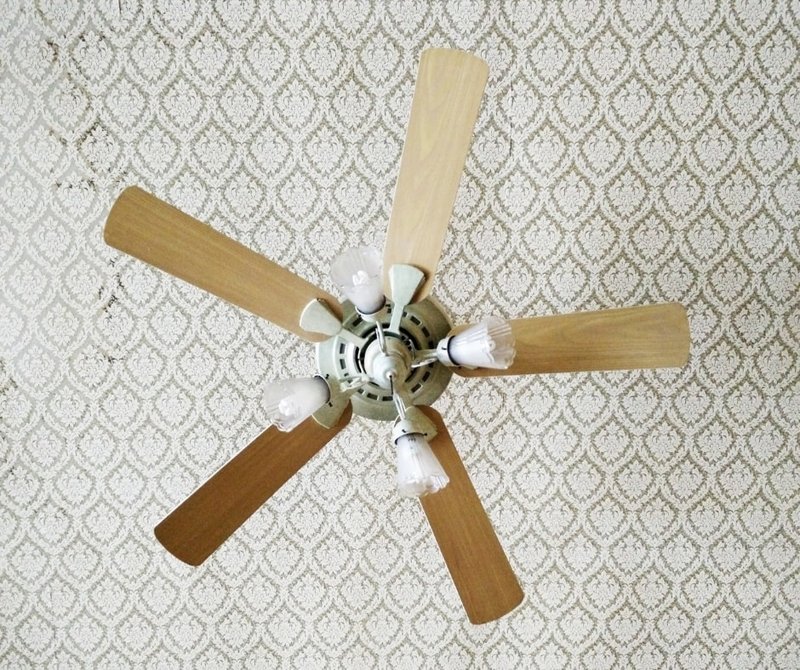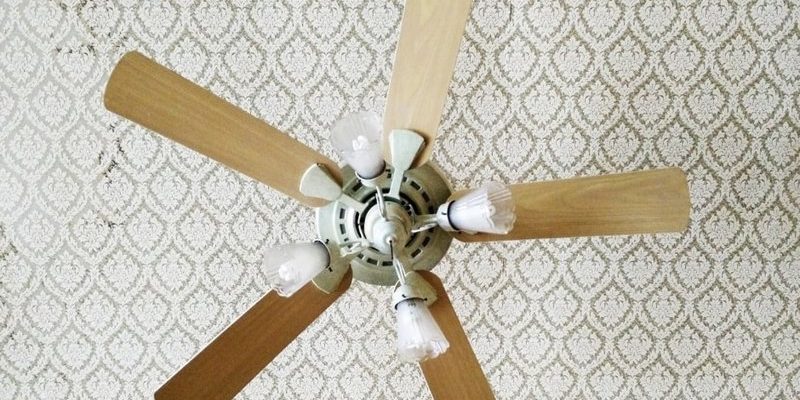
Lutron makes some of the most respected lighting and fan controls around. Their remotes—like the Pico series—promise smart home convenience at your fingertips. But when “syncing” fails, it’s more like playing a frustrating game of charades with technology. If you’re sitting there, remote in hand, wondering why it won’t pair or control your ceiling fan, you’re not alone. Here’s how to troubleshoot, reset, and get everything working again—without needing an engineering degree.
Understanding How Lutron Ceiling Fan Remotes Work
Before diving into troubleshooting, let’s break down how these remotes actually work. Think of your Lutron ceiling fan remote as a sort of walkie-talkie: it sends out signals, the fan’s receiver picks them up, and acts on your commands. For a “sync” to happen, both sides—remote and receiver—have to be spoken in the same language and frequency.
Most Lutron remotes (especially Pico models) use radio frequency instead of infrared. That means you don’t have to point them directly at your fan. But here’s the thing: any miscommunication—wrong code, signal interference, or a hiccup during initial pairing—can throw off the sync. Even something simple, like a dying battery, can make that walkie-talkie conversation sound like static.
Why does this matter? Because understanding the basics will help you troubleshoot more confidently. If you know the communication flow, each step you try (like resetting or re-pairing the remote) makes more sense.
First Steps: Check the Simple Stuff
Honestly, it’s easy to overlook the basics when you’re frustrated. Start by checking the things that trip up even the most tech-savvy homeowners. Most Lutron “won’t sync” issues aren’t complicated—just sneaky.
- Batteries: Even brand-new remotes can arrive with weak or dead batteries. Open the remote’s compartment and swap in fresh batteries—making sure they’re installed with the correct polarity. A cheap fix that solves more issues than you’d expect.
- Power Supply: If your fan or its receiver doesn’t have power, it can’t receive signals. Double-check wall switches, circuit breakers, and any wiring connections you may have recently touched.
- Distance & Obstructions: Pico remotes are designed for range, but thick walls, metal fixtures, or even microwaves can muffle RF signals. Try standing closer to the fan for a quick sync attempt.
Let me explain: sometimes it’s not the remote’s fault—it’s environment, overlooked settings, or tiny fixes hiding in plain sight. If you get lucky, the solution is already in your hands.
How to Reset Your Lutron Ceiling Fan Remote
If the basic checks don’t work, resetting is your next best move. This process is a bit like rebooting a stubborn laptop: it erases mistakes and lets the system start fresh.
- Remove the batteries from the remote and leave them out for about 30 seconds. This can clear minor glitches.
- Press and hold the main button (often labeled “off” or “stop”) for 10–15 seconds while replacing the batteries. For some models, this puts the remote in pairing or reset mode.
- The remote’s LED indicator might blink or flash in a specific pattern—if you see this, it’s a sign the reset is working.
Resetting doesn’t erase factory programming, but it does clear temporary bugs. Think of it as giving your remote a strong cup of coffee before asking it to try again.
Most Lutron fan receivers stay “listening” for a few seconds after a power cycle. If possible, cycle power to the fan (via wall switch or breaker) at the same time you reset the remote. This helps both sides of the system start fresh.
Pairing or Syncing the Lutron Remote With the Ceiling Fan
Syncing the remote to your ceiling fan isn’t much harder than setting up a new TV remote, but the steps have to be done in the right order. If the remote and receiver get out of sync, commands are ignored.
Here’s how to pair the Pico (or similar) Lutron remote:
- Make sure both the remote and fan receiver have power (fresh batteries and live circuit).
- Press and hold the pairing button on the remote. On many Lutron models, this is either the “off” button or a tiny recessed button on the back (you may need a paperclip).
- Wait for the remote’s LED to blink. At the same time, power cycle the fan to trigger its receiver to listen for new codes.
- Release the button after 10–15 seconds. If pairing succeeded, the fan (or its light) may blink or beep briefly.
You might be wondering, “What if nothing happens?” Don’t panic. Sometimes, synchronization takes a couple of tries—especially if the receiver missed the pairing signal due to timing. Repeat the steps slowly, making sure you’re within range and not rushing. If your fan’s receiver has its own pairing button (sometimes hidden in the canopy), use that in combination with the remote for best results.
Troubleshooting Common Lutron Ceiling Fan Remote Problems
No luck syncing? Troubleshooting is your secret weapon. Think of this like detective work: look for clues, eliminate suspects, and test fixes one at a time.
- Interference: Devices like cordless phones, routers, or even fluorescent lights can jam your remote’s RF signal. Try turning off other electronics in the room or testing at a different time of day.
- Remote Malfunction: Test the remote with another known working fan (if you have one). If the second fan syncs, the problem is probably with your original fan’s receiver.
- Receiver Issues: Sometimes the receiver inside the ceiling fan just gets “stuck.” Turning off the circuit breaker for 30 seconds can help it reset. If this doesn’t help, the receiver may need repair or replacement.
- Incorrect Model or Frequency: Not all Lutron remotes work with all fan receivers. Double-check your manual or the model number on the receiver. Universal remotes have limitations—sometimes, only the matching Lutron remote will sync properly.
Let me explain something a lot of people overlook: every remote and receiver pairing is a mini-conversation. If they’re not programmed to “speak” to each other, you’ll be stuck no matter how many times you try to sync. It’s like trying to unlock your car with your neighbor’s keys—no amount of button-mashing will make it work.
Resetting the Ceiling Fan Receiver (When All Else Fails)
If nothing else is working, you might need to reset the receiver inside the fan itself. This isn’t as scary as it sounds, but you’ll want to make sure the power is off before poking around the canopy.
Here’s a safe way to try:
- Turn off the circuit breaker that powers the fan.
- Wait at least 30 seconds to allow any stored charge to drain.
- Turn the breaker back on. Some Lutron receivers automatically enter pairing mode after being powered up—check your fan’s manual for details.
- Try the pairing steps again with your remote right after restoring power.
If you have to open the fan canopy, always double-check for live wires and use caution. If you’re not comfortable, call in a pro—no shame in staying safe!
Some fans have a tiny “learn” or “reset” button near the receiver. Press and hold this just after restoring power, then try to sync your remote again. If the receiver still ignores you, it may have failed and need replacement.
Replacing the Lutron Remote or Receiver: When Is It Necessary?
People often wonder: “How do I know if the remote or the receiver is actually dead?” It’s a fair question—and sometimes, after every sync and reset attempt, the only answer left is replacement.
Here’s what to look for:
- No response from the LED: If the remote’s indicator light refuses to blink after fresh batteries, the remote itself might be the problem.
- No reaction from the fan: If the remote blinks but the fan never responds—even after successful pairing steps—the receiver is likely the culprit.
- Test on another device: If possible, try your Lutron remote with another Lutron-controlled fan or device in the house. This narrows down the issue fast.
Not all universal remotes work with Lutron fans. While it’s tempting to swap in a generic replacement, many ceiling fans require a specific remote and receiver combination. If in doubt, get the exact model number from your original remote or check with Lutron support for a replacement.
Replacing a receiver inside the ceiling fan isn’t always DIY-friendly—especially if wiring is involved. If you aren’t sure, a local electrician can often swap it out in under an hour.
Comparing Lutron Remotes vs Universal Ceiling Fan Remotes
You might be tempted to buy a universal remote as a quick fix. Honestly, this is hit-or-miss with ceiling fans—especially for brands like Lutron, which use unique codes and pairing methods.
Lutron remotes (like Pico models) are designed to pair only with matching Lutron receivers. They have specific radio frequencies, so a universal remote may not be able to “talk” to your fan at all. Even if the remote looks similar, internal electronics may differ.
Universal remotes usually work best for standard IR (infrared) devices or fans with generic radio receivers. Some high-end models claim multi-brand compatibility, but Lutron isn’t always on the list.
If you need a new remote, check your original model number first. If you have to replace the receiver, you may find it easier (and less frustrating) to stick with Lutron’s own matching parts—otherwise, you risk compatibility headaches down the road.
Keeping Your Lutron Ceiling Fan Remote Synced and Working
Syncing issues are annoying, but the good news is that most problems have a fix—even if it takes some trial and error. Keeping things running smoothly comes down to a few habits:
- Replace batteries every year or at the first sign of lag.
- Keep the remote and fan receiver’s software (if applicable) up to date.
- Be gentle when pressing buttons—no need to mash them.
- Check your home for sources of RF interference if sync problems keep popping up.
It’s a little like maintaining a bike: small tune-ups prevent big breakdowns. Once your Lutron remote and ceiling fan have found their rhythm, you can trust the system to work when you need it most—without the frustration of endless troubleshooting.
Sometimes, getting everything in sync takes a bit of patience and detective work. But once it’s done, you’ll be back to enjoying cool breezes at the tap of a button, no tech headaches required.
If you’ve made it this far, chances are your Lutron ceiling fan remote—and your nerves—are close to being back in sync. Take your time, follow each step slowly, and don’t hesitate to call in help if you’re still stuck. Comfort is just a click away.
